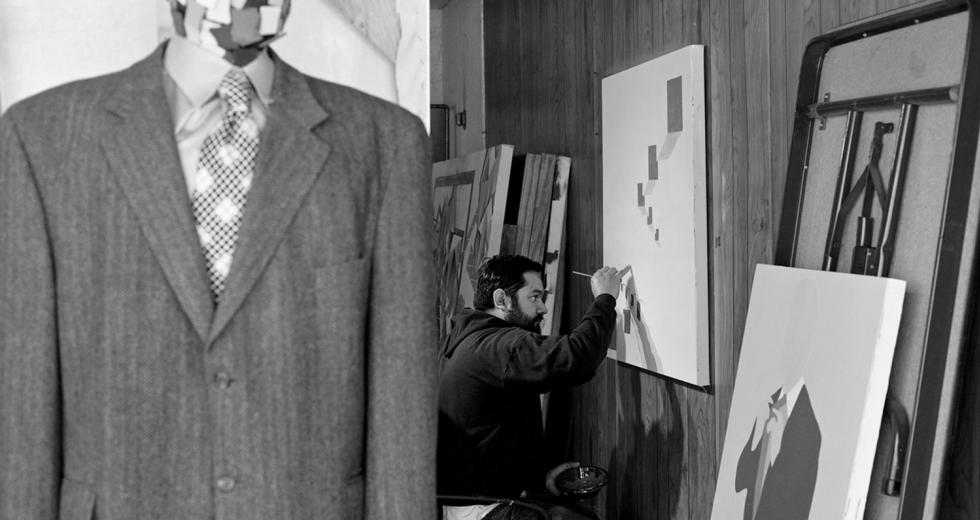Manuel Fernando Rios is one of the many college professors in the Capital Region who had to quickly adapt from instructing students in person to online in March when Californians were ordered to shelter-in-place due to the coronavirus. Rios, a fine artist based in West Sacramento, is teaching two Sierra College painting courses this semester.
“Things that we used to teach in person, we have to now make these online videos or PowerPoints that explain everything,” he says, and instead of being able to provide his students immediate feedback in the studio, “we have to wait around and have them send images to me so I can respond back to them. I’m just not used to it, but the work is coming out pretty good.”
“A Talk With My Friends” by Manuel Fernando Rios. (Courtesy of
Manuel Fernando Rios)
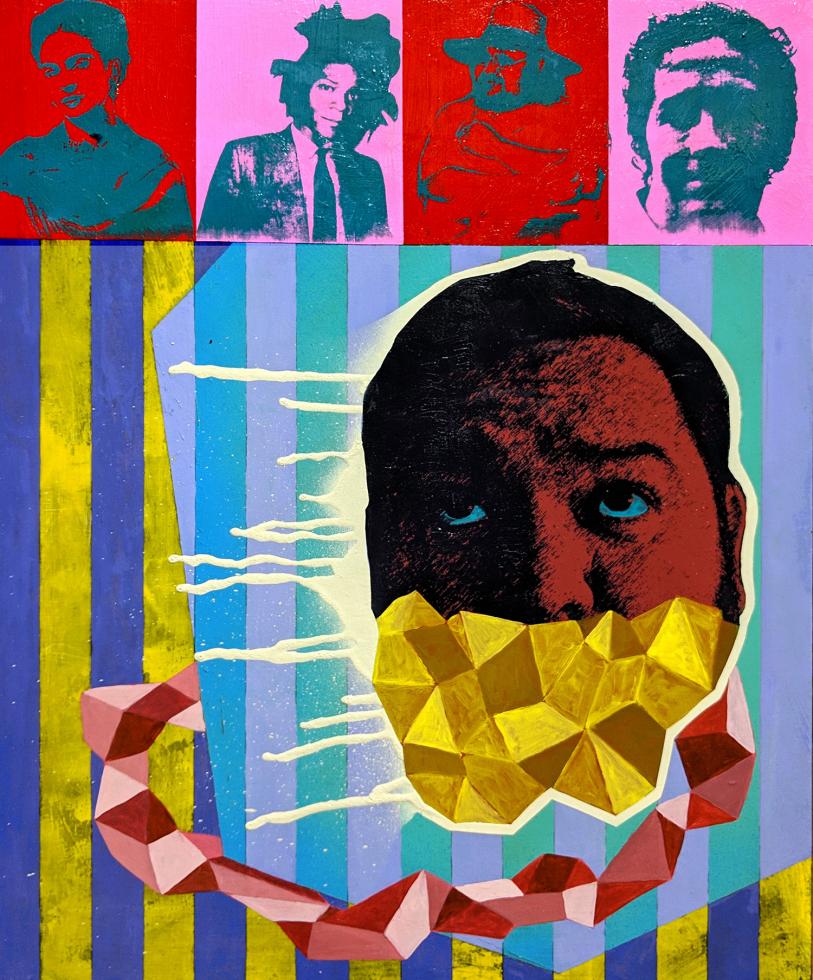
Rios has been an adjunct professor at Sierra since 2012 and has taught “anything 2D, except watercolor” at several schools in the region, including Sacramento City College, Sacramento State and UC Davis. Mentored by Ricardo Favela of the Royal Chicano Air Force artist collective, Rios identifies himself as a Chicano artist — both a political and personal label — and describes his artwork as “neo-Expressionist, neo-Chicano, mixed in with pop culture.”
Boldly hued geometric motifs enveloping figures or parts of figures are signature in his paintings, and emojis, social media logos, political memes and self-portraits are recurring elements too.
Rios has been working on new pieces for a solo exhibition originally scheduled for May at Axis Gallery, a cooperative gallery in downtown Sacramento at which he is a member. The show has been postponed because of the coronavirus pandemic, but he is continuing to make new work. “I’ve found myself in my studio a lot more,” he says. “The output I’ve been coming up with is more than usual. You get in the zone, and ideas start to percolate. … Everything flows so much better.”
You earned a Master of Arts degree in studio art at Sacramento State and then a Master of Fine Arts at UC Davis. Why did you want the MFA after the MA?
An MA isn’t a terminal degree, and an MFA is. … (The MA program at Sac State) comes with a lot of reading and learning art history, (and the MFA program at UC Davis focused more on developing) your technique. When I was getting my MFA, it was about experimenting with my own ideas. It was really freeing to me. … It was more about ideas.
I was actually never going to get my master’s degree — I was going to be a high school teacher. … I told my (college) counselors that on the same day I got into a credential program. So I had in my left hand acceptance into the program, and the future I wanted to have in my right hand. Thank God the next year I got into (an arts) program.
“False Impression” by Manuel Fernando Rios. (Courtesy of Manuel
Fernando Rios)
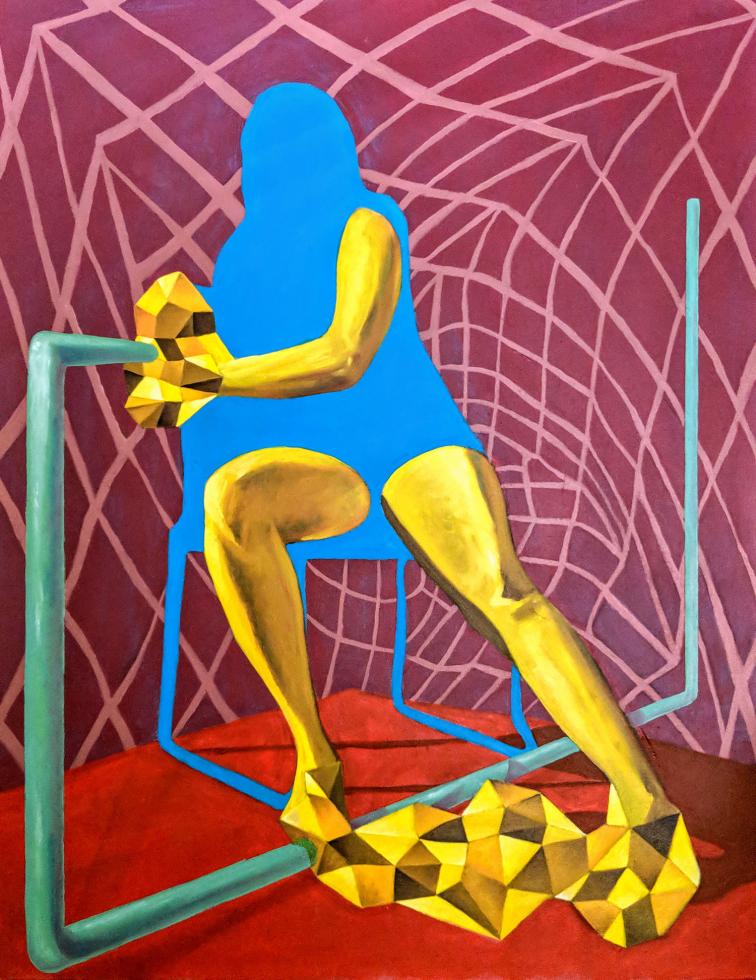
I think I made the right decision. Although it’s a struggle, because all you’re qualified to do is blow up as an artist or be an instructor. There are little jobs here and there, but nothing that pays a substantial amount of money, but I don’t think I’d enjoy being a high school teacher.
(When I was in college,) I didn’t really have a love of making art yet, but I was good at drawing. As I approached my senior year, I fell in love. … Teaching college is very rewarding. There’s a lot of students out there that are better than they think. Students that think they know everything aren’t really as good as they think, and they don’t listen to instructors. … It’s funny, because I was one of those students who didn’t listen to my art instructor. … I understand it.
Is obtaining a tenured position teaching the ultimate goal?
Yes, but it’s not a vanity thing — I want to plant my roots and get something started to have more of my say in something and help the community and focus on that community.
You curated a show at Mendocino College Art Gallery that opened in February called “Everyday People,” featuring artists who are people of color.
Yeah, the artwork is still there (because of the shelter-in-place order). I got contacted (by Doug Browe) because I curated a show called “Who Gets to Call It Chicano Art?” (for Axis Gallery in 2018), and the purpose of that show was to show the different variety and diversity of Chicano artwork. … (Browe is) a fellow student who I went to school with at Sac State who teaches at Mendocino, and he asked me through Facebook. I said yes, and it was a year and a half until the show. … I didn’t want to be known as the guy who curates just Chicano art, so I wanted to have a show that I curated that had nothing to do with (the artists’) ethnic identity, so we wouldn’t get tokenized.
The theme of the show is celebrating the mundane. In the time of social media, which is highlighting the exciting things, I wanted to highlight the simple things. … I’m glad I went that route.
You’re a member of Axis Gallery. For how long, and how has it changed your art practice?
I think I became a member in 2014. I was asked by one of the members to apply because there was an opening spot. I decided to do it because I wasn’t looking to be represented by a gallery. It’s cool because it’s a co-op, but you get to be around these artists every month, … and you are guaranteed a solo show every 12-18 months. I like it, because this way, I’m not beholden to one gallery. It’s been a really good experience.
“Exit Strategy” by Manuel Fernando Rios. (Courtesy of Manuel
Fernando Rios)
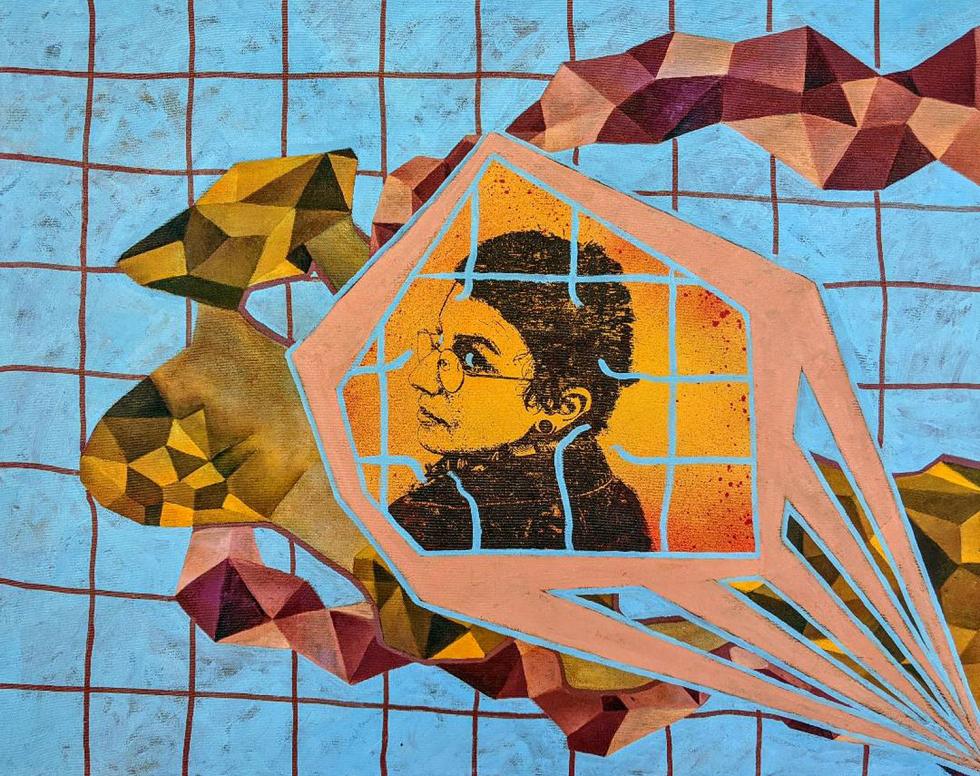
Being an Axis Gallery member, you’re surrounded by a small community of artists all from the same gallery, and they become not just your peers, but your friends and people who can give you advice, not just on making art, but hanging art … and different ways of looking at your art. It’s almost like being in grad school again. … It’s helped me see my art in a different way.
How many members does Axis have?
It’s about 14-15. We were in the process of starting to recruit, because we’d like to be at 17 or 18 members, but then everything closed (due to the pandemic, so we’ve put that on hold). …
We decided we are going to show work online. … It’s going to be one present member to exhibit with a past member to celebrate the longevity of Axis Gallery. … So, every two weeks, two new artists will be showing online, but the shows that (we have already shown will be archived on the website).
You had a solo show that was opening in May at Axis, but it had to be postponed because of the pandemic. How is this affecting you financially?
It’s not affecting me much financially because usually I teach at Sac City and Sierra, so I’m pretty good. Usually, my year-round teaching schedule is solid. But since (I didn’t get to teach this semester at Sac City), I was going to get a part-time job to make up for the funds.
The show at Mendocino (College), I got paid for that. And I got paid for workshops at the (Jan Shrem and Maria Manetti Shrem Museum of Art in Davis), so I kind of made up the money for not teaching at City, and then the pandemic happened, and now I can’t find any work.
How do you use your art politically?
The initial ideas are very political and have very strong ideas of identity. In the last few years, it’s getting more personal — it’s my own personal experiences in the work, and I try to leave the compositions a little open. … I ended up wanting to make my work more expressive (because) … I felt like I was making caricatures of my culture. I felt like I was preaching to the choir and wasn’t changing anybody’s minds.
“Can’t See My Reflection” by Manuel Fernando Rios. (Courtesy of
Manuel Fernando Rios)
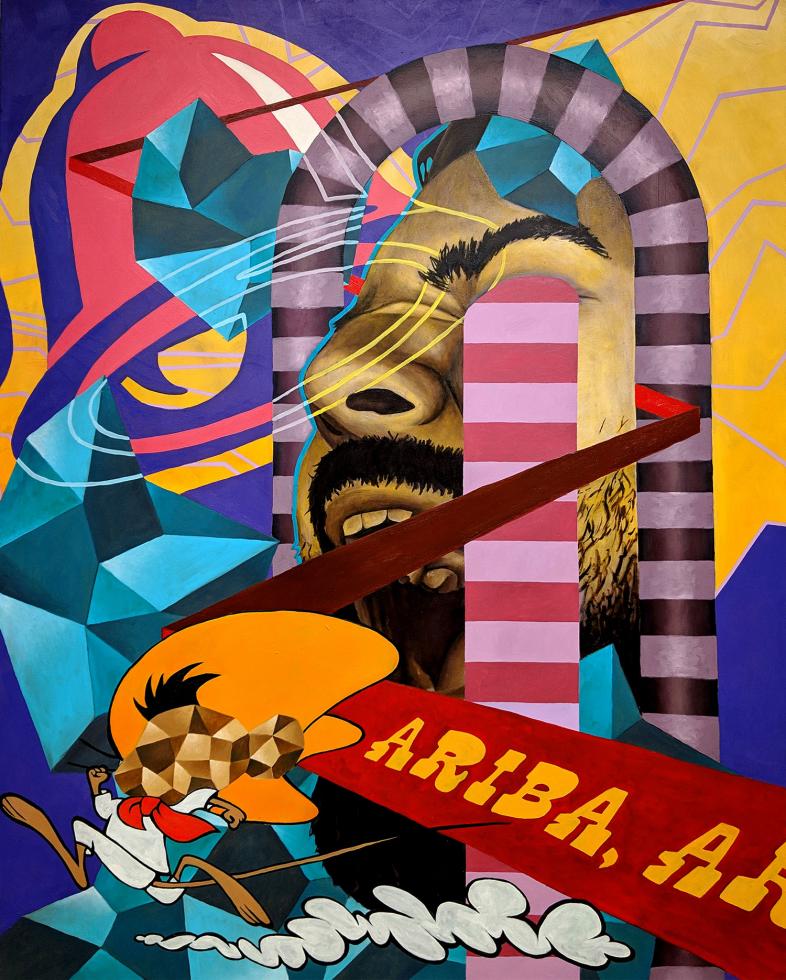
If I’m making a silk screen for (Chicano) events, that’s fine, (but for gallery purposes,) … I transitioned to more open-ended compositions in order to open the dialogue with the viewer. I justify the transition because I could reach another audience while still inspiriting other Chicano/a/x artists.
By the time I was making my MFA work, my work had become pure abstraction, (referencing the) Mexican and American border, which is a manmade concept. … The geometrical abstractions I use are echoes of racism that’s blunt, but that’s hidden. The political aspects are still there.
What do you think artists can do going forward as we deal with the pandemic?
It’s almost like an overflow of people online, at least of artists supporting artists trying to do these art talks or online exhibitions. … It’s overwhelming how many online exhibitions and new online groups have been forming, … it’s hard to keep up, but that’s actually a good thing.
–
Stay up to date on the effects of the coronavirus on people and business in the Capital Region: Subscribe to the Comstock’s newsletter today.
Recommended For You
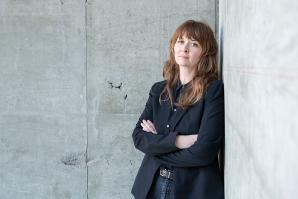
Art Exposed: Serena Cole
After 15 years in the Bay Area, Serena Cole returns to Grass Valley to make art and find community
Cole uses mixed media — watercolor, gouache, colored pencils and vinyl paint — to create vulnerable, delicate and harsh portraits that reflect the way women are viewed in art and society and how the artist digests it all.
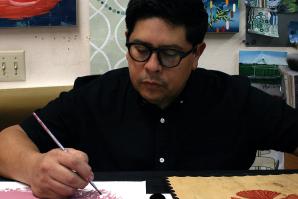
Art Exposed: Jose Arenas
Davis-based artists brings migration, culture and his experience as a first-generation American into his paintings
Belonging to two places and not quite fitting into either is a familiar feeling for many first-generation Americans.
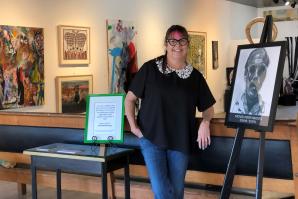
Creativity in Quarantine
Artists and art gallery owners in the Capital Region are finding ways to connect to the public while in isolation
As county and state orders compelled most people to remain at home, the Sacramento art world took a huge hit. However, creativity has continued to flourish in quarantine.



